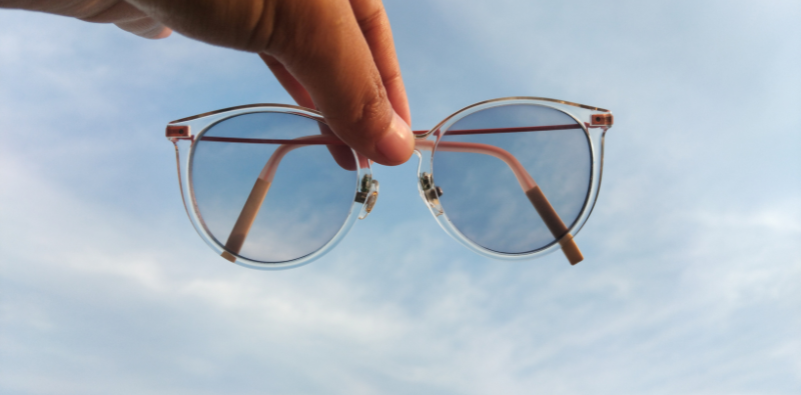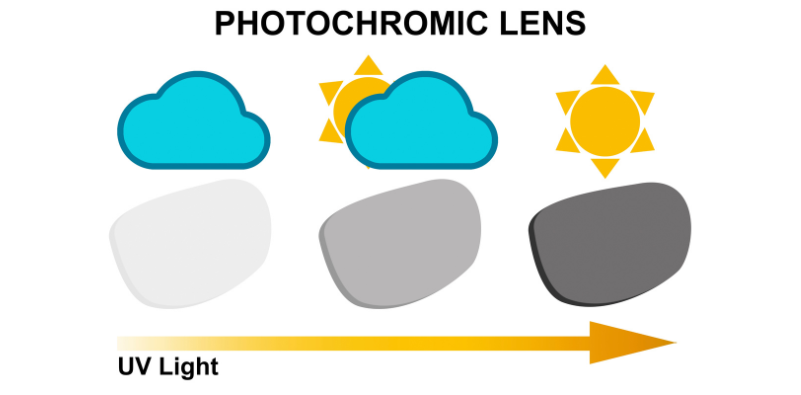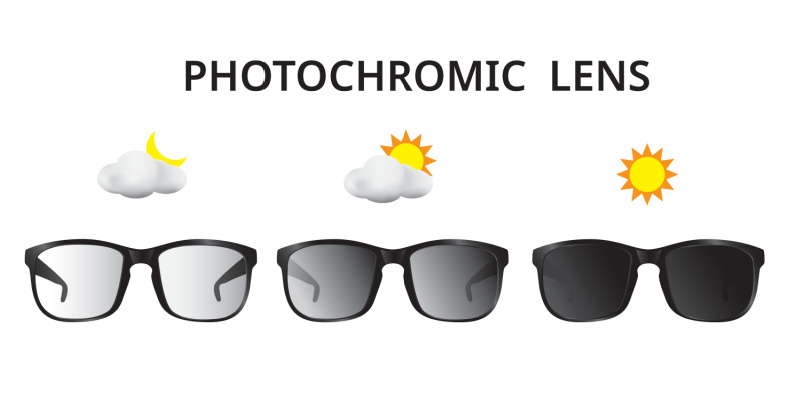Photochromic Lenses Explained
Every glasses-wearer knows the struggle – one minute you’re indoors with crystal clear vision, then dazzled by sunlight the moment you step outside. Then there’s the constant juggling between regular specs and sunglasses, the fumbling in your bag or, worse still, forgetting your shades entirely and spending the day squinting.
Photochromic lenses offer an elegant solution to this age-old problem. These clever glasses that change in sunlight automatically adapt to different lighting conditions, giving you perfect vision, whether you’re pottering about the kitchen or basking in the garden. At Robinson Optometrists, we’re particularly excited about HOYA Sensity lenses, which represent some of the most advanced technology available in this category.
What are photochromic lenses?

Think of photochromic lenses as the chameleons of the eyewear world. They automatically darken when exposed to bright light and return to clear when you’re back indoors. It’s like your regular prescription glasses and sunglasses rolled into one.
These innovative lenses don’t just adjust to brightness – they also provide excellent UV protection, shielding your eyes from those rays we can’t see but which can affect our long-term eye health.
The science behind the magic

The secret sauce lies in special light-sensitive molecules embedded within the lens material. When they’re hit by UV light, a chemical reaction causes them to change structure and darken the lens. When the UV light disappears (like when you go indoors), the molecules return to their original state, and the lens becomes clear again. Modern photochromic lenses respond remarkably quickly to these changes – and they’re built to last.
Why HOYA Sensity lenses are something special

HOYA has built an outstanding reputation as an innovator in optical solutions, and its Sensity range shows why the brand is considered a leader in the field. These aren’t your average photochromic lenses – they’re engineered with precision.
HOYA Sensity lenses boast impressively fast transition times. The colours you see remain true-to-life, whether the lenses are clear or tinted, giving you natural vision in every situation. Indoors, they provide exceptional clarity that rivals the best standard lenses.
They’re also reliable across different climates. Some older photochromic technologies can be sluggish in colder weather, but HOYA Sensity lenses activate effectively even when there’s a chill in the air.
These lenses also offer comprehensive protection from both UV rays and blue light, supporting your eye health throughout the day.
Expert guidance from your local Optometrists

Choosing the right lenses can feel overwhelming with so much choice available. That’s where our experienced team comes in. As your trusted opticians in Whitley Bay, we take time to understand your lifestyle, daily activities and vision needs before recommending suitable lens options for you.
Our team has extensive knowledge of HOYA’s full range and can explain how their different photochromic lenses might work for your specific requirements. Whether you spend most of your time indoors, enjoy outdoor sports or drive frequently, we’ll help you find your ideal match.
Ready to discover how HOYA Sensity photochromic lenses could transform your daily vision experience? Get in touch today. Better yet, pop in and let our friendly team show you the full range of options.





